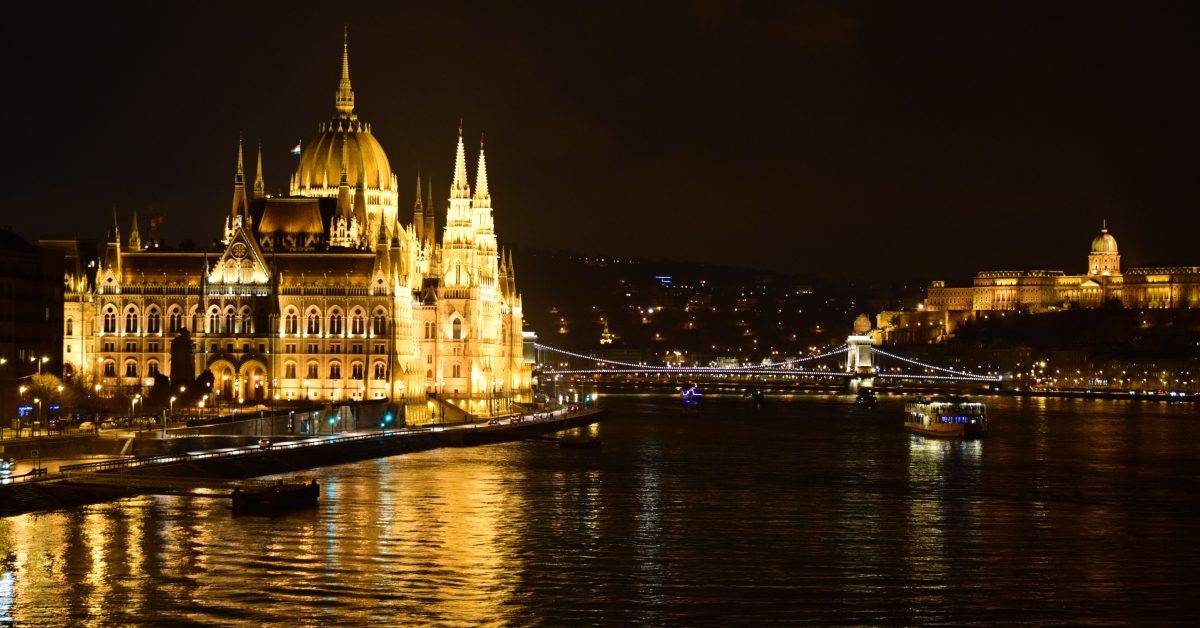Magyarország

Hungary is situated in Central Europe at approximately an equal distance from the Equator and the North Pole. The country occupies a territory of about 93,000 square kilometers and there are about ten million people living here. There are nineteen counties. Our country can be divided into three large regions: Transdanubia, the Great Plain and Northern Hungary. The Transdanubian part is mainly hilly with the exception of the northern region, which is called the Small Plain. The soil is exceptionally good there for crops and vegetables. A similar area is a Great Plain, where most of Hungary’s crops are grown. Northern Hungary is fairly mountainous and the country’s highest peak can also be found there. Hungary belongs to the drainage system of Europe’s second largest river, the Danube. The Tisza is another long river and Lake Balaton is the second largest freshwater lake in Central and Western Europe.
Regions
- Alföld, the Great Hungarian Plain
- Transdanubia:
- Western Hungary (Kisalföld, the Little Hungarian Plain )
- Southern Transdanubia
- Central Transdanubia and Lake Balaton
- Northern Hungary
On the north, Hungary is bordered by the Czech and Slovak Republic, on the north-east by the Ukraine, on the east Romania, on the south by Serbia, Croatia and Slovenia while on the west the country borders on Austria. The official language of Hungary is Hungarian, but quite a few other languages are spoken as native languages by the several ethnic minorities living near the country’s borders. These are German and the Slavonic language spoken in the countries around us.
The Hungarian Republic was proclaimed on (the) 23rd (of) October, (in) 1989. Soon afterwards the ruling (then the only) party split up and new parties were formed. In the parliamentary elections held in March and April 1990, six parties received enough votes to be represented in Parliament. The president of the most successful party, the Hungarian Democratic Forum (MDF) formed a coalition government in May 1990. This meant the end of a forty-year-long totalitarian system in Hungary and pullout of the Soviet troops. People began to feel free as they realised that their minds were no longer manipulated centrally and they were allowed to join any political party or movement they sympathised with.
There are 4 parties in the Hungarian Parliament. The MDF (see above) and the Young Democratic Federation belong to the opposition. The Hungarian Socialist Party and the Alliance of Free Democrats have been making up the government since the last election. The supreme power is vested in the Parliament whose members are elected for four years. Since Hungary became a parliamentary democracy, the Parliament has been in session almost continually, MPs work there, sometimes more days a week. There are constant debates and heated discussions whenever the government is trying to push a bill through, unlike a few years ago when everything was accepted by a unanimous vote.
Tourism also plays an important role in our economy as millions of tourists come to Hungary from year to year. I think one reason for so many tourists coming to our country is the hospitality of the Hungarians. Besides, the Carpathian Basin is at cross-roads for the traveller from north to south, from east to west. Hungary also has various tourist attractions. Visitors can enjoy the wonderful sights of Budapest, relax on one of the numerous beaches of Lake Balaton, go and see the lovely Hungarian villages where traditions of folk art are preserved and treasured or visit some of the smaller but beautiful towns like Veszprém, Kőszeg, Eger or Szentendre.
They can go for outings to the romantic ‘Puszta’, the Great Hungarian Plain, where they can see the famous Hungarian stud farms. Hungary has a lively cultural life. The most popular cultural events attended by a lot of tourists seem to be the open-air summer festivals held in different towns, such as the Szeged Open-air Festival, the Sopron Festival Weeks, the Szentendre Summer or the Veszprém Castle Concerts while in spring the greatest event is the Budapest Spring Festival. Apart from festivals, the Opera House, concert halls, open-air theatres and museums are also visited by a lot of tourists who are genuinely interested in the cultural life of the country.
To introduce Budapest to a tourist from abroad I would tell him some historical and geographical data about the Hungarian capital: 2000 years ago the Romans called this settlement Aquincum that is ‘the city of waters’ because there were and still there are a lot of hot water springs and medicinal baths in this region. Real urbanisation began in the fifteenth century when under the rule of Sigismund of Luxemburg the royal castle on the Buda hills was built. The later centuries, especially the nineteenth century saw the flourishing of Pest lying on the other side of the River Danube. Today Budapest is a busy metropolis with a population of 2 million people. The city is extremely rich in historical and cultural monuments, works of art and natural beauties.
If you have a foreign guest you have to show him/her the Castle District with the Matthias Church, the Fisherman’s Bastion and Szécsenyi National Library in the Royal Castle. Looking over the river Danube there is Europe’s most beautiful House of Parliament. In the middle of the Heroes’ Square there is a one hundred and eighteen foot high column with the Archangel Gabriel on the top. At one side of the square there is the Museum of Fine Arts where you can see wonderful pictures. The other important museum is the National Museum, where the Revolution and War of Independence started on 15th March, 1848. The Opera House designed by Miklós Ybl is as famous as the Opera House in Vienna.
The building was renovated recently so it is much nicer now. If you want to see elegant clothes and all kinds of people from different nationalities you have to go to Váci Street, the pedestrian zone and at the end of the street the Vörösmarty Square with the famous Café Gerbaud. St. Stephen’s Basilica is the second centre of Christianity in Hungary after the Basilica of Esztergom. Margaret Island is a perfect place for recreation. You can take long walks, admire the beautiful flowers and trees there and you can go for a swim there. The Gellért Spa Bath, Szécsenyi Bath, the Király and Rudas Baths are world famous and you can feel artistic atmosphere, too. Among the nine bridges famous ones are: the Chain Bridge built and designed by Adam Clark. At the bottom of the bridge there are the beautiful lions. The bridge joins the Pest side with the Gellért hill. The other bridge is the Elizabeth Bridge, the first suspension bridge. Liberty bridge has at one foot of it the technical university and at the other foot is the market-hall.
The Sights of Budapest
Castle Hill
- King Béla IV. – fortification – XIII.th century
- King Sigsmund – royal palace – XV.th century
- Coronation Church
- Fishermen’s Bastion
- Hilton Hotel
Gellért Hill
- Citadel – to have a nice view of the city and the bridges spanning the Danube
- Statue of St. Gellért
- Statue of Liberty
Margaret Island
- to be named after Princess Margaret, daughter of King Béla IV.
- to be the ‘park’ of Budapest
- the best place for trips and recreation
Heroes’ square
- Millinary Monument (to commemorate the 1000th anniversary of the founding of Hungary)
- to be surrounded by a colonnade
- statues of the great rulers and leaders of Hungarian history
City Park
- artificial lake (to row in summer, to skate in winter)
- Vajdahunyad Castle (a mixture of architectural styles)
- Zoo and Botanical Gardens
- Fun Fair
- Municipal Grand Circus
Museums
- Aquincum Museum
- Castle Museum
- Museum of War History
- Museum of Fine Arts (painting, sculpture and graphic collection by European masters)
- Hungarian National Gallery (large collection of Hungarian works of fine arts)
- Hungarian National Museum (exhibitions on Hungarian history and natural science) (Hungarian crown jewels)
Sopron is located on the west border of Hungary and is famous for its faithfulness. If you are there you have to go to Orsolya Square, to the Fire Tower and to Szécsenyi Square and to the Fő/main Square. If you go to Pannonhalma Abbey you are visiting the first church in Hungary. In Tihany Abbey you can find the deed of foundation, in which are the first written Hungarian words. Other evidence of our religious life is the church of Ják, Zsámbék and Debrecen and the Basilica of Esztergom.
There are many castles in our country and there used to be many more before World War I. because Hungary played a very important part in protecting Europe against invadors. The following castles are worth seeing: the castles of Tata, Csesznek, Sárvár, Veszprém, Siklós, Eger and Diósgyőr. Palace of Keszthely is famous for the Festetics family who helped the agricultural and cultural life of Hungary. They also established the agricultural university and the foundation of the museum there. The palace of Fertőd used to belong to Esterházy Family, which is a great Hungarian political, cultural family again. Arts have always played a great role in their lives. Haydn used to be their family musician.
Hungarian folk art is world famous. It is true for craftwork, our folksongs, gipsy music and clothing. The Embroidery of Kalocsa, Mezőkövesd and Matyo embroidery are popular and a lot of foreigners buy embroidered things for presents. If we talk about folk arts we shouldn’t forget horses. Our forefathers conquered the territory on horseback. If you go to Hortobágy or Bugac you will see famous stud farms there. There are university towns and cities in Hungary like Pécs, Szeged, Debrecen, Győr and of course Budapest. If you are in Pécs you should go to see the Synagogue, the Minaret and the Barbican. If you are in Szeged you should visit Cathedral Square and from the city you can go to Ópusztaszer, where our nation is celebrated there with Festy cyclorama. Among our natural beauties we have to mention the Mátra hills, Aggtelek Stalactite Caves, Őrség, Danube bend and Hortobágy puszta.
20th August is the festival of foundation of our state. Saint Stephen’s Day is celebrated everywhere. There are different ceremonies, programmes and fireworks in the evening all over the country. We shouldn’t forget that it is the festival of new bread. Every year the Flower Festival is organized in Debrecen. It is always gorgeous but the festival itself is danger because it costs a lot of money. 23rd October is the holiday of Declaration of the Hungarian Republic in 1989. The revolution against communism and the Soviet rule started on 23rd October in 1956.
Some cultural events in our country: the Kapolcs festival has been organized for ten years. It is famous for performing different plays and there is folk art fair, too. Győr is also famous for its International Cultural Summer Festival and Spring Festival. In summer opera singers, actors and directors want to perform their plays in the Szeged Open Air Theatre. They have to prepare and enter for the programmes well in advance. The Water-Music-Flower Festival in Tata is both a cultural and entertaining event and people like to go there to have fun. Some people say that the events of Pepsi Island are wonderful and they not only have fun but they learn a lot of new things.
Lapozz a további részletekért



